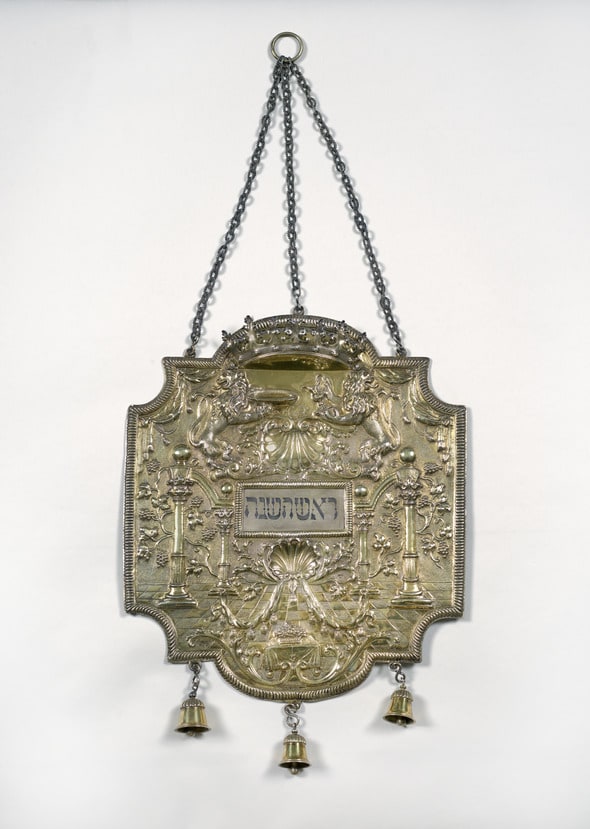
- Object Name:
- Torah Shield
- Artist/Maker:
- Zacharias Wagner
- Bio:
- c. 1680-1733; active c. 1712-1733
- Place Made:
- Augsburg (Germany)
- Date:
- 1717–18
- Medium:
- Silver: repoussé, gilt, cast, and engraved
- Dimensions:
- Overall (without chain): 16 5/8 × 12 × 1 1/16 in. (42.2 × 30.5 × 2.7 cm) Overall (with chain): 27 × 12 × 1 1/16 in. (68.6 × 30.5 × 2.7 cm)
- Credit Line:
- Gift of Dr. Harry G. Friedman
- Accession Number:
- F 70c
Not On View
In order to facilitate the public reading of the Torah in Ashkenazi communities, a device fitted with movable plates is often hung from a dressed Torah indicating the section to which a scroll is turned. The use of a functional shield was first mentioned in the 15th century by a German rabbi, Israel ben Pethahiah Isserlein (1390-1460), who complained that the reading plaques did nothing to enhance the beauty of the Torah. A single extant example from the end of the 16th century satisfies the aesthetic requirements of Rabbi Isserlein. Little 17th-century Judaica has survived, including shields. Whether little was made, or much destroyed, we do not now know. Early 18th-century examples, like this shield, evidence a spirit of experimentation in composition and iconography. Since the Torah shield was a relatively new type of ceremonial object, there was no long tradition governing its appearance and decoration. Beyond the required box for plaques and a chain to hang the shield from the staves of the scroll, the silversmith seems to have been free to draw on the decorative vocabulary of his age, with perhaps one or two motifs added that had Jewish significance. For most of the decoration of this shield, Zacharias Wagner chose motifs that can be found on secular silver from Augsburg of the same period, such as a shell, grape vines, and a table bearing a bowl of fruit. Two rampant lions, symbols of the tribe of Judah and the people of Israel, bear aloft a laver and basin, probably an allusion to the donor. Lavers and basins are traditional symbols of the Levites who assist the cohanim (priests) by washing their hands before congregational blessings. The specific form of the lions (with doubled tails) may indicate that this shield was intended for a Bohemian synagogue, perhaps one in Prague, the capital, since a lion with two tails is the symbol of both the city and the country, and Judaica from the area often bears lions of this form.
Information may change as a result of ongoing research.